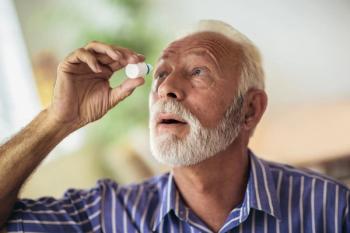
Study finds exercise-induced changes in visual performance, calls for reevaluation of SRC efficacy
Accommodation facility, saccadic eye movement, speed of recognition, peripheral awareness, and hand-eye coordination were all affected by a single bout of incremental maximal treadmill exercise.
A recent study discovered that medical professionals should utilize caution when performing comprehensive sideline sports-related concussion (SRC) assessments for return to play decisions, as exercise can affect women’s visual performance.1 The study, published in Journal of Optometry, found that of the visual assessments conducted, accommodation facility (d = 1.604), saccadic eye movement (d = 0.952), speed of recognition (d = 1.475), peripheral awareness (d = 1.961), and hand-eye coordination (d = 1.139) were most affected (P < 0.05) by a single bout of maximal aerobic exercise.1
“Sideline detection is the first and most important measure in identifying a potential concussion and removing an athlete from further harm,” the study authors said. “While most sideline protocols assess cognition and balance, there is a persistent call to include assessments of visual performance on a variety of visual domains as SRCs commonly affect the visual pathways.”
The study authors, led by Brandon S. Shaw, PhD, FHEA, reinstated that the noteworthy takeaway was that a single bout of maximal aerobic exercise had no effect on visual memory (P = 0.556).1
“Clinically, these results provide caution for the use or inclusion of multiple visual tests within comprehensive and more complex sideline sports-related concussion assessments for return to play decisions,” they wrote. “This is especially relevant given the subtle changes in ocular motor function that occur with concussion.”
The study enrolled 80 female participants, with 1 later failing to return for post-testing. Participants were also randomly assigned to either the experimental group or control group, and reported no regular physical activity for the past 6 months prior. Participants underwent an optometric assessment to ensure that they had 20/20 vision by using the Spectrum Eyecare software (Version 6.0.0, Digital Optometry, South Africa). The software was used to conduct the visual field examination. Other tests that were conducted during the study included kinanthropometry, hand-eye coordination, and peripheral awareness. All tests were performed following a 9 to 12 hour fast in the Visio-Spatial Intelligence Laboratory at the University of Zululand.1
After a wash-out period of 2 weeks, all participated were then reassessed for inclusionary and exclusionary criteria. The control group performed the visual test battery at pretest, with the experimental group engaging in a single bout of incremental maximal treadmill exercise, walking at 2 kilometers per hour (km.h−1) and 1% grade for 2 minutes. Then, the speed increased to 5.5 km.h−1 at 1% grade, then increasing every 15 seconds by 0.2 km.h−1 until reaching a maximum of 16 km.h−1. Grade increments were then increased by 0.5% every 30 seconds until test termination criteria were achieved.1
Study authors urged that more studies will need to be conducted to support their findings, particularly whether if they may differ between athletes in different sports and different levels of play and the inclusion of men in these studies.1
“Acute exercise can either enhance or deteriorate visual performance, further complicating assessments conducted immediately post-head trauma,” study authors stated.
Reference:
Shaw B, Breukelman G, Millard L, Moran J, Sandercock G, Shaw I. Maximal aerobic exercise and acute visual performance in females: implications for concussion sideline testing. Journ of Optom. 2024;17(4):100515.
https://doi.org/10.1016/j.optom.2024.100515
Newsletter
Want more insights like this? Subscribe to Optometry Times and get clinical pearls and practice tips delivered straight to your inbox.
















































.png)


